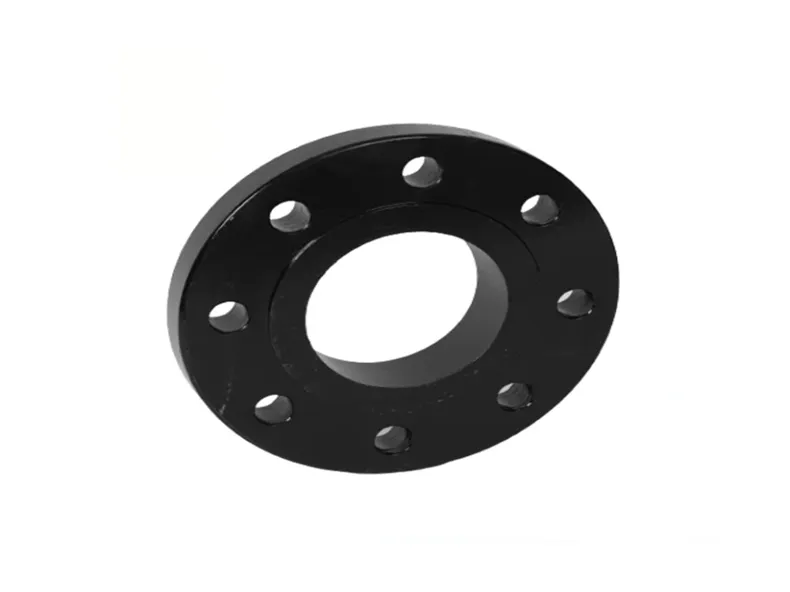Carbon steel flange and stainless steel flange are two common flange materials. They differ significantly in chemical composition, performance characteristics, and application fields. This article comprehensively analyzes these two types of flanges from various perspectives, offering unique insights to expand your knowledge.

In industrial manufacturing, flanges are vital components for connecting pipes, valves, and equipment. The choice of materials for flanges directly impacts a project’s safety, reliability, and overall cost.
Carbon steel is steel without alloy elements added on purpose, while stainless steel is steel with a high alloy content added for rust prevention. Stainless steel is much more expensive than carbon steel. The two types of steel have different uses and cannot be compared.
Carbon steel is usually stronger than stainless steel, but it is easy to rust. Common classifications of carbon steel include hot rolling, cold rolling, galvanized, silicon steel, rebar, wire rod, angle groove, etc.; the main categories of stainless steel include 200 series, 300 series, 400 series, 500 series, 600 series, 900 series, etc.

The difference lies in adding nickel, chromium, molybdenum, titanium, niobium and other alloy elements to stainless steel flanges. In addition, not all stainless steel flanges will not rust. Only under the conditions allowed by various stainless steel materials can they not rust or prolong the rust time.
Carbon steel flanges are widely used in structural steels without rust prevention requirements. Stainless steel is a special-purpose steel used for general decoration and special rust prevention occasions. The price difference between the two is large. Stainless steel flanges contain a variety of precious metals, so the price is generally several times higher than that of carbon steel.
Chemical Composition And Performance Characteristics
Carbon Steel Flange
They are produced using carbon steel as the primary material, formed through casting and forging. These flanges primarily comprise iron and carbon, typically containing carbon in the range of 0.008% to 1.708%. Known for their favorable mechanical properties, plasticity, toughness, and welding performance, carbon steel flanges offer cost-effective solutions and are commonly utilized in applications with low to medium-pressure requirements.

(1) Mechanical properties: Carbon steel flanges’ mechanical properties are mainly reflected in tensile strength, yield strength, and elongation. As the carbon content increases, flanges’ tensile strength and yield strength increase, but elongation decreases.
(2) Corrosion resistance: They have poor corrosion resistance and are easily corroded by oxidation, acid, alkali, and other media. Under certain circumstances, they must be treated with anti-corrosion treatments, such as coating, galvanizing, etc.
Stainless Steel Flange
Stainless steel products are made through casting, forging, and other processes. They are corrosion-resistant, high-temperature resistant, high strength, and easy to clean. Stainless steel’s main chemical components are alloy elements such as iron, chromium, and nickel.

(1) Mechanical properties: The mechanical properties of stainless steel flanges are better than those of carbon steel flanges, with higher tensile strength, yield strength, and elongation.
(2) Corrosion resistance: They have good corrosion resistance, mainly due to the passivation film on their surface. The passivation film can resist oxidation, acid, alkali, and other media corrosion, ensuring the flange’s service life in complex environments.
Application Fields And Key Points Of Selection
Application Areas
(1) Carbon steel flange: suitable for projects with low and medium pressure levels, such as petroleum, chemical industry, natural gas, construction, and other fields.
(2) Stainless steel flange: This flange is suitable for projects with high and medium pressure levels, such as those in food, pharmaceuticals, papermaking, marine engineering, and other fields.
Key Points For Selection
(1) Consider the properties of the medium: When selecting flange materials, you must first consider the properties of the medium, such as corrosiveness, temperature, pressure, etc. They should be used for highly corrosive and high-temperature media.
(2) Consider project costs: They are cheaper and suitable for projects with higher cost requirements. However, they have higher maintenance costs and require anti-corrosion treatment under certain circumstances.
(3) Consider the connection method: Flange connection methods include threaded connection, welding, and flange connection. Different connection methods have different material requirements for flanges, which must be selected according to actual conditions.
Summary
Significant differences exist between carbon steel flanges and stainless steel flanges in terms of chemical composition, performance characteristics, and application fields. The most appropriate flange material should be selected based on actual needs and comprehensive consideration of media properties, engineering costs, connection methods, and other factors.
This article provides an in-depth analysis of carbon steel flanges and stainless steel flanges in multiple dimensions, aiming to provide you with new knowledge and unique insights. In actual projects, the correct selection of flange materials will help improve the safety, reliability, and economy of the entire project.
GET IN TOUCH
Company:
Elite Piping Manufacture Co., Ltd.
Factory Address:
Office # 805, Building No. 6 Poly Metropolitan, Yongshum Town, Tongzhou District, Beijing, China.
Contact Person:
Michael
Contact Numbers:
+86 186 1829 1381
Email:
elite@elitepiping.com

